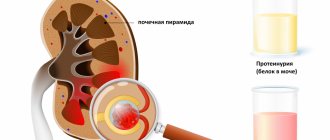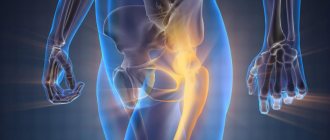Low hemoglobin is not an independent disease. It is the result of an underlying disease, therefore, if anemia is detected in a patient, the doctor is obliged to prescribe a comprehensive examination.
Concepts of pseudoanemia and hidden anemia
Pseudoanemia is the entry of tissue fluid into the bloodstream during the resorption of edema.
Hidden anemia is the result of the loss of a significant part of the fluid composition of the blood due to dehydration (can be caused by diarrhea, vomiting, hyperhidrosis). In this situation, the blood begins to thicken, so laboratory analysis shows that the number of red blood cells and hemoglobin is normal, even if this is not the case.
Severity of anemia
Based on severity, anemia is classified into:
- light. Hemoglobin level is more than 100 g/l, erythrocytes - more than 3 T/l;
- average Hemoglobin level from 66 to 100 g/l, erythrocytes - from 2 to 3 T/l;
- heavy. Hemoglobin level is less than 66 g/l.
Classification of anemia
All anemias manifest themselves differently. Taking into account the cause of the pathological condition and its symptoms, there are four main types:
- posthemorrhagic anemia (caused by chronic/acute blood loss);
- hemolytic anemia (develops due to the destruction of red blood cells). This group includes hereditary hemolytic anemias: - with a lack of glucose-6 phosphate dehydrogenase; - thalassemia; - sickle cell; — Minkowski-Shoffar;
- deficiency anemia (caused by a deficiency of microelements/vitamins/iron, that is, any elements that play an important role in the process of hematopoiesis);
- hypoplastic anemia (results from impaired hematopoiesis in the bone marrow, the most dangerous form).
According to the color indicator of blood, anemia can be:
- normochromic (hemoglobin is normal). This group includes hemolytic and posthemorrhagic anemia;
- hyperchromic (hemoglobin increased). These include folate deficiency and B12 deficiency anemia;
- hypochromic (hemoglobin is low). This refers to thalassemia, iron deficiency and chronic posthemorrhagic anemia.
Based on the diameter of red blood cells, anemia can be:
- normocytic (almost all hemolytic and acute posthemorrhagic anemia);
- megaloblastic (B12-deficiency anemia);
- macrocytic (folate deficiency, hemolytic disease of the newborn);
- microcytic (chronic posthemorrhagic anemia).
Based on the iron content in the blood serum, anemia is divided into:
- normosideremic (acute posthemorrhagic anemia);
- hyposideremic (chronic posthemorrhagic and iron deficiency anemia, thalassemia);
- hypersideremic (hemolytic and B12-deficiency anemia).
Causes of anemia
Common causes of low hemoglobin are:
- large blood loss;
- disruption of the formation of new blood cells;
- activation of pathological processes of blood destruction.
Causes of posthemorrhagic anemia
Acute posthemorrhagic anemia is the result of the loss of a large amount of blood in a minimal period of time. The chronic form of this disease is caused by:
- prolonged blood loss;
- polyps, hernias and stomach ulcers;
- kidney diseases;
- malignant tumor neoplasms;
- uterine bleeding;
- disorders of the blood clotting system;
- liver failure, cirrhosis.
What causes hemolytic anemia
All hemolytic anemias occur if “old” red blood cells begin to destroy faster than new ones can form.
The sickle cell form is caused by the synthesis of a defective hemoglobin molecule. The emerging defective molecules form peculiar crystals that stretch the red blood cell, causing the latter to take on the shape of a sickle. Sickle erythrocytes are non-plastic. It leads to increased blood viscosity and blockage of small blood vessels. With their sharp ends they can destroy each other.
Thalassemia is a hereditary disease. It occurs due to a decrease in the rate of hemoglobin formation. Hemoglobin that is not fully formed is unstable. It resembles small inclusions that give the red blood cell the appearance of a target cell.
Deficiency anemias and their causes
Iron deficiency anemia develops for reasons such as:
- lack of iron/increased need for iron (this is why degree 1 anemia is often diagnosed in premature babies and pregnant women);
- chronic blood loss;
- problems associated with the absorption of iron from the gastrointestinal tract, its transportation and disposal.
B12 deficiency anemia is caused by a lack of vitamin B12. The disease can be caused by poor nutrition (refusal to eat meat) or disruption of the absorption of cyanocobalamin in the gastrointestinal tract (parasites, diseases of the small intestine, stomach). Also, symptoms of B12 deficiency anemia can appear while taking hormonal drugs and anticonvulsants.
Folate deficiency anemia is a consequence of a lack of vitamin B9. It is usually observed in pregnant and lactating women, cancer patients, teenage children, premature newborns, liver disease, alcohol abuse, etc.
Causes of hypoplastic anemia
Hypoplastic anemia is manifested by a decrease in the content of all cells in the blood. External and internal factors lead to such a pathological and life-threatening condition:
- vibration and radiation effects on the body;
- serious injuries;
- taking certain medications;
- ingestion of poisons into the body;
- herpes, fungi, bacteria;
- genetic mutations;
- rheumatoid arthritis, lack of elements involved in hematopoietic processes;
- endocrine diseases, etc.
Normal hemoglobin levels
The table will tell you how much hemoglobin should be in the blood. Based on these data, therapists make comparisons, which allows them to identify even minor disorders in infants. What information will be important to patients?
| Age | Norm |
| 0-14 days | 135-200 |
| 14-30 days | 115-180 |
| 1-6 months | 90-140 |
| 6-12 months | 105-140 |
| 1-5 years | 100-140 |
| 5-12 years | 120-150 |
| 12-15 years | 120-160 |
| 15-18 years old | 117-166 |
| 18-65 years old | 131-173 |
| Over 65 years old | 125-175 |
Depending on age, average indicators vary greatly. The reason is hormonal levels, which need to be taken into account due to the immune system. This factor remains fundamental, so it cannot be ignored. Practice shows how difficult moments therapists encounter when monitoring people’s conditions over time.
Normal indicators are a convention, so they cannot be accepted 100% as a prerequisite.
The newborn's indicators remain high. This shows how fast his blood is moving and all his organs are working. After this, the data begins to constantly change, which often affects the condition of the child and adolescent. Only in adulthood does the level become constant, so it can be used to quickly determine the occurrence of certain diseases.
Symptoms of anemia
Conventionally, the symptoms of low hemoglobin are classified into:
- specific (manifest only in specific types of anemia);
- nonspecific (the same for all types of disease).
Nonspecific symptoms of anemia are as follows:
- pallor of the skin/mucous membranes;
- migraine;
- increased fatigue;
- noise in ears;
- refusal of food;
- constant drowsiness;
- feeling of lack of air;
- dizziness;
- cardiopalmus;
- decreased libido, sexual impotence in men;
- disruption of the menstrual cycle;
- heart failure.
Specific signs of different types of anemia
Each type of anemia has its own specific symptoms. Thus, the acute posthemorrhagic form manifests itself:
- increased heart rate;
- fainting;
- cold sweat;
- attacks of dizziness;
- pale skin;
- decrease in body temperature.
In chronic posthemorrhagic anemia the following are observed:
- very white skin;
- craving for or intolerance to certain smells;
- swelling of the face;
- change in taste sensations;
- dry skin;
- brittle nails;
- nausea;
- lack of air;
- sweating;
- involuntary urination when sneezing or laughing;
- temperature increase.
Hemolytic anemias are characterized by:
- yellowness of the skin and mucous membranes (when red blood cells are destroyed, bilirubin enters the bloodstream);
- increased size of the spleen/liver;
- increased levels of bilirubin in the blood;
- darkening of urine and feces;
- high body temperature;
- weakness.
Sickle cell anemia - a type of hemolytic - has the following symptoms:
- jaundice;
- shortness of breath;
- formation of inflamed areas on the legs;
- blurred vision;
- the presence of hemoglobin in the urine.
Doctors diagnose thalassemia if the patient:
- the shape of the skull bones changes;
- the skin becomes very pale with a yellowish/greenish tint;
- eyes become narrow and swollen;
- there is a lag in mental/physical development;
- bones are deformed;
- the spleen/liver enlarges.
Signs of iron deficiency anemia include:
- buzzing in the head;
- lack of oxygen;
- migraine;
- constant desire to sleep, rest;
- dry skin;
- peeling of nails;
- hair section;
- desire to eat chalk, smell paint, etc.;
- violation of the act of urination;
- hyperhidrosis.
Also, during laboratory tests, it is discovered that the level of hemoglobin and red blood cells in the blood is significantly lower than the established norm.
B12 deficiency anemia affects the gastrointestinal tract and central nervous system. As a result, the patient experiences:
- swelling of the legs;
- crawling sensation on the arms/legs;
- change in gait;
- memory impairment;
- problems swallowing food;
- enlarged liver/spleen;
- drying of the gastrointestinal mucosa.
In turn, folate deficiency anemia manifests itself:
- inability to eat acidic foods;
- glossitis;
- difficulty chewing and swallowing food;
- enlarged spleen/liver;
- atrophy of the mucous membranes of the gastrointestinal tract.
The symptoms of hypoplastic anemia are:
- the appearance of ulcers in the mouth, on the skin of the face;
- bruising on the skin;
- severe bleeding gums;
- increased fatigue;
- desire to sleep;
- tachycardia;
- decrease in the number of leukocytes, red blood cells and platelets in a blood test.
If you experience similar symptoms, consult your doctor
. It is easier to prevent a disease than to deal with the consequences.
Diagnosis of anemia
To identify anemia in a patient, the doctor conducts a comprehensive diagnosis, which includes:
- clarification of the circumstances under which health deteriorated for the first time, the symptoms that are most pronounced;
- studying the patient's life history. The doctor clarifies whether there are chronic diseases, a hereditary predisposition to any pathological conditions, whether there are bad habits, whether the patient has recently taken any medications, or whether there has been contact with poisons or toxic compounds;
- examination of the skin, determination of its color. Measurement of pressure, pulse;
- laboratory tests of blood and urine.
In some situations, the patient is prescribed a bone marrow test. It is necessary to understand whether there are any disturbances in the hematopoietic processes. Also, using special equipment, a trephine biopsy can be performed, during which the doctor correlates the bone marrow with the tissues surrounding it.
An ECG is usually performed to examine the heart. If necessary, the patient is referred to a hematologist.
Laboratory diagnosis of low hemoglobin
In blood biochemistry, if anemia is suspected, the levels of:
- glucose;
- cholesterol;
- uric acid;
- creatinine;
- electrolytes.
This is necessary in order to assess the condition of the patient’s internal organs. A urine test is also performed to exclude the presence of concomitant diseases.
Laboratory signs of different types of anemia:
- posthemorrhagic acute anemia. Reticulocytes more than 11%, the presence of immature red blood cells and red blood cells of abnormal shapes. Leukocytes - 12 g/l (increased), shift in the formula - to the left;
- chronic posthemorrhagic anemia. Presence of tiny, poorly colored and oval red blood cells. Unexpressed lymphocytosis. Iron - below 9 µmol/l. A decrease in the amount of calcium and copper against the background of an increase in the concentration of manganese, nickel and zinc;
- sickle cell anemia. Hemoglobin is reduced to a level of 50 to 80 g/l, red blood cells - from 1 to 2 T/l. Reticulocytes are increased by about a third. The presence of red blood cells, the shape of which resembles a sickle;
- Thalassemia. Detection of target-like red blood cells in a blood sample, an increase in the number of reticulocytes. Hemoglobin - 20 g/l, erythrocytes - 1 T/l. Decreased concentration of platelets and leukocytes;
- B12 deficiency anemia. The presence of giant erythrocytes. Their color is bright, there is no highlighted area in the center. Shape: pear-shaped or oval. Life expectancy is shortened. Detection of huge neutrophils, a decrease in the number of eosinophils (may be completely absent). The concentration of basophils and leukocytes also decreases. Bilirubin, on the contrary, is increased.
Treatment of anemia in children and adults
To get rid of the symptoms of anemia, you need to eliminate the factor that provoked the decrease in hemoglobin. So, if the pathological condition is associated with the presence of parasites in the body, you need to get rid of them, if with poor nutrition, start following a diet, if with a malignant/benign tumor, it should be removed.
In other words, treatment of low hemoglobin in men, women and children may be conservative or require specialized surgical procedures. Usually, in order to improve the condition of patients and reduce the severity of negative symptoms, doctors adhere to the following therapeutic regimen:
- drugs are prescribed that can compensate for the resulting deficiency - B12 for B12-deficiency anemia, iron for iron deficiency, B9 for folate deficiency, etc.;
- normalize the level of red blood cells. This can be accomplished by transfusion of red blood cells or washing of red blood cells. However, these measures when providing assistance to people with low hemoglobin levels are extreme and are carried out only if the resulting disease is life-threatening.
Treatment of acute and chronic posthemorrhagic anemia
Treatment of the acute form of posthemorrhagic anemia is carried out in a hospital or hematology clinic
. The medications prescribed to the patient help normalize the amount of blood and the level of formed elements, and are also aimed at preventing relapses of the disease. Taking into account the amount of blood lost, the patient may need a transfusion, the introduction of blood substitutes or red blood cells.
As for the chronic form of this type of anemia, it is impossible to get rid of its symptoms without eliminating the cause. After the factor that provoked the pathological condition has been eliminated, the patient will be prescribed a diet that includes eating foods rich in iron. Medicines that can be used are Sorbifer Durules, Ferrum-Lek, vitamins B12 and B9, etc.
Treatment of sickle cell anemia
The main goal of therapeutic measures when it comes to a patient with sickle cell anemia is to prevent the development of hemolytic crises. To do this, the patient must avoid being in places with low oxygen levels. In parallel, blood substitutes and red blood cell infusions can be used.
Elimination of iron deficiency anemia
Treatment of iron deficiency anemia includes eating foods rich in iron and treating existing gastrointestinal diseases. The patient should regularly eat:
- cheeses;
- porridge;
- chicken eggs;
- meat;
- dairy products.
Iron supplements can also help quickly get rid of the symptoms of anemia. The tablets usually used are “Ferrum-Lek”, “Totem”, “Sorbifer Durules”, etc. Injections are prescribed only for severe forms of the disease. It is important that the medicine used does not cause problems with the gastrointestinal tract. If constipation or flatulence occurs, the product needs to be replaced.
Treatment of B12 deficiency anemia
Complex therapy of gastrointestinal diseases and adherence to the principles of proper nutrition help eliminate the manifestations of B12-deficiency anemia. Most often, patients are prescribed vitamin B12 injections. They allow you to quickly restore hematopoietic processes in the bone marrow.
How to get rid of folate deficiency anemia
Folate deficiency anemia is treated by taking vitamin B9 and following a diet. The patient should include foods that contain high amounts of folic acid in their diet. This means citrus fruits, vegetables, herbs, asparagus, nuts, seeds, tomatoes, watermelons, corn, avocados, eggs, animal liver, cod liver, cereals, grain bread.
Treatment of hypoplastic anemia
A hematologist treats hypoplastic anemia. Depending on the age, gender and condition of the patient, he can use different methods - bone marrow transplantation, stimulation of hematopoietic processes, blood transfusion, etc.
Causes and symptoms of low hemoglobin
The article was prepared by a specialist for informational purposes only. We urge you not to self-medicate. When the first symptoms appear, consult a doctor.
Why do people's hemoglobin levels drop? Why are pharmaceutical drugs not always helpful, and sometimes even harmful, and how to avoid this? How to easily increase hemoglobin at home? You will learn all this in this article.
Content:
Symptoms of low hemoglobin
How can a person determine a decrease in hemoglobin? First of all, this is the presence of asthenic symptoms: the patient feels general weakness, quickly gets tired, drowsiness, dizziness, possible headaches, irregular heartbeat and blood pressure (reduced). In severe cases, patients may experience fainting.
When a decrease in hemoglobin is a consequence of a lack of iron in the body, degenerative symptoms are noted: the skin is dry, cracks form in the corners of the mouth, nails and hair become brittle, fall out, and grow back slowly. Smell and taste disturbances may occur.
Mostly low hemoglobin is a sign of some disease. The most common ones are:
- chronic iron deficiency anemia;
- blood loss;
- thinning of the gastric mucosa (chronic atrophic gastritis);
- inflammatory bowel disease, dysbacteriosis (chronic enteritis);
- iron deficiency anemia after surgery;
- autoimmune diseases (lupus, glomerulonephritis, rheumatoid arthritis);
- long-term infectious diseases (hepatitis, gastroenterocolitis, tuberculosis, pneumonia, kidney inflammation, etc.);
- malignant blood pathologies;
- malignant tumor lesions, especially of the gastrointestinal tract.
Hemoglobin determination
Hemoglobin is a complex compound of iron and protein. It is found in erythrocytes - red blood cells. Hemoglobin performs the most important function for the body - the transfer of oxygen molecules to all organs and tissues. It captures oxygen in the lungs and carries out further oxidation, transferring it to all necessary structures. Oxygen is necessary for the body to ensure vital functions, obtain and exchange energy and carry out recovery reactions.
To produce hemoglobin, you need to eat iron-containing foods. It is also important that iron is absorbed normally in the small intestine. The content of B vitamins in food, especially vitamin B12 and folic acid, is extremely important. It is also important that there are no pathological changes in the blood, i.e. acquired or hereditary blood diseases.
Normally, the amount of hemoglobin in the blood of men is 130–160 g/l, in women – 120–147 g/l. In pregnant women, the lower limit of normal hemoglobin is reduced to 110 g/l.
How much hemoglobin should there be?
The norm of hemoglobin is taken to be values that differ depending on a person’s age, gender and other characteristics.
Hemoglobin is calculated in grams per liter (g/l). For an adult man, the normal level is 130-170 g/l, while for a woman it is 120-155 g/l. This difference is due to the fact that men have a higher concentration of androgens (a special group of steroid hormones) that stimulate the formation of red blood cells. For pregnant women, normal hemoglobin limits drop to 110-140 g/l as the body begins to use iron more actively.
In people under 18 years of age, the hemoglobin norm is differentiated by age and does not depend on gender. In the first two weeks of life, hemoglobin is considered normal: 135-195 g/l, then this figure decreases to 125-165 g/l, and by one year it reaches 110-130 g/l. Afterwards, the hemoglobin level gradually increases by approximately 1-3 g/l per year (both lower and upper limits). For example, by school age (6-7 years) it reaches 115-135 g/l, and by 13-14 years – 120-145 g/l.
A blood test can show a deviation in hemoglobin concentration not only due to metabolic disorders and various diseases, but also for other reasons. This is the consumption of fatty foods, fried foods, alcohol on this day or the day before, excessive mental or physical stress, taking certain medications, smoking before the analysis.
Many people experience low hemoglobin, which in 90% of cases is associated with iron deficiency anemia. This syndrome affects approximately 30% of the world's population, especially children and women.
Why is low hemoglobin level dangerous?
When hemoglobin decreases due to iron deficiency anemia, a lot of symptoms can appear. These are weakness, malaise, decreased performance, dizziness. Shortness of breath often appears, the heart rate increases, taste and smell are distorted, the mouth becomes dry, and the tongue begins to tingle.
External signs of anemia may include dry and thinning hair, pale and flaky skin and lips, brittleness and loss of shine in nails. Women may experience burning or itching of the genital (external) organs. With a strong decrease in hemoglobin, fainting and dizziness begin, constant headaches, rapid fatigue, and impaired attention. Muscle relaxation is common, which sometimes leads to urinary incontinence.
If hemoglobin is below normal, then malfunctions of the immune system appear. This can lead to complications with any disease, even if it is a simple cold.
Low hemoglobin is a common occurrence for most pregnant women. A strong deviation from the norm affects the health of both the woman herself and the child she is carrying. Women have complications such as uterine hypotension, abnormal location of the placenta, hypoxia, delay or cessation of fetal development. The born child may have low weight, underdevelopment, disorders of the respiratory and nervous systems, subsequent deviations in mental and physical development, atrophy of muscles and organs.
If hemoglobin is slightly reduced during anemia, then the problem can be solved by taking vitamins and changing your diet. It should contain meat and offal, fish, pomegranates, buckwheat, apples and freshly squeezed juices. By the way, it is precisely because of the lack of meat and offal in the diet that vegetarians often experience low hemoglobin. More serious deviations from the norm can be resolved at the medication level.
Often, a decrease in hemoglobin indicates the presence of a disease or other disorder in the body. This may be an infection, a hereditary pathology, a disorder of hemoglobin synthesis; hemoglobin may decrease due to blood loss, not only obvious, but also hidden, for example, with some diseases of the stomach or intestines, uterine fibroids, ovarian cysts.
In any case, if hemoglobin decreases from the norm, you need to change your diet, and if there is a large deviation, you should visit a specialist - a hematologist.
Iron absorption, what's the catch?
So why, in most cases, when taking additional iron internally, do we not achieve results?
Most drugs designed to replenish iron in the body are in the form of ferric iron. Unfortunately, this form is very difficult to digest and is more likely to cause constipation and heaviness in the stomach than help with this problem. The body only absorbs ferrous iron, but such a drug is much more difficult to find.
The second reason for low iron absorption lies in casein. All dairy products contain a special protein – casein. It sticks to iron and prevents it from being absorbed and is simply excreted from the body. Therefore, another important condition is that all dairy products (milk, cottage cheese, sour cream, yogurt, cream, fermented baked milk, including fermented milk products) must be excluded from the diet, at least not consumed for 5 hours before and after taking iron (if talk about pharmaceutical drugs).
Thirdly, if you have low stomach acidity, iron will be less absorbed. And the lower it is, the worse the effect will be!
There is one more important thing: if you have severely low iron, then first of all it will accumulate in the liver, and only then appear in the blood, so it should be consumed from 1-2 months to six months.
Causes of low hemoglobin
The body can lose hemoglobin for various reasons. This happens most quickly with blood loss - both obvious and hidden. Obvious bleeding occurs with heavy and prolonged menstruation in women (more than five days), hemorrhoids, various wounds, injuries or operations.
Hidden bleeding is possible with some gastrointestinal diseases, pathologies of the female reproductive system (ovarian cyst, uterine fibroids, etc.). Autoimmune diseases, infections or hereditary diseases can lead to a decrease in hemoglobin and a short life of red blood cells.
Low hemoglobin is also observed in blood donors (with systematic, staff donation). In children, low hemoglobin may be a consequence of an unbalanced diet that is poor in the vitamins and minerals necessary for the body.
How to replenish iron levels and increase hemoglobin?
Probably everyone has heard that black caviar increases hemoglobin. Yes, it can even significantly increase hemoglobin in one day, but not everyone can afford it, not to mention the fact that you can’t easily buy it on the market, since its sale is prohibited. Black caviar is sold only through retail chain stores.
There are also more affordable means. Dried fruits contain much more iron than fresh ones, so you can easily make a “concentrate” at home.
Mix dried apricots (or apricots), raisins (you can add prunes), walnuts, lemon and honey. In a meat grinder or food processor, grind everything into a homogeneous mixture. Take a teaspoon 3 times a day before meals.
It would not be a bad idea to drink an infusion of rose hips instead of tea, which also contains a lot of iron, not to mention the fact that rose hips are the record holder for the content of vitamin C. And vitamin C improves the absorption of iron by an order of magnitude, as does calcium in ionic form (not dairy products). !)
Be sure to eat pomegranates every day, you can make juice from them. Despite the fact that they contain little iron, it is completely absorbed by the body. And thanks to a huge number of other useful substances, it will be easier for the body to get back on its feet.
If you are a juice lover, then focus on green apple juice and pumpkin juice.
On topic: TOP products for increasing hemoglobin
Video: Hematogen - a remedy for anemia or a dummy?
Treatment of low hemoglobin
To restore hemoglobin, treatment of the concomitant disease is usually necessary. In addition, the patient needs to take vitamin B12 and folic acid. The diet should be rich in iron and animal proteins. It is useful to eat fish, meat, eggs, combining them with complex carbohydrates (fiber) found in fruits and vegetables. In severe cases this may not be enough. Then the patient is shown tablets and intravenous injections.
To increase hemoglobin levels, it is recommended to eat chicken liver, kidneys, heart, and white meat. For cereals, give preference to buckwheat, beans, lentils, peas and other legumes. The best vegetables to eat are tomatoes, new potatoes, onions, pumpkin, and lettuce. Any greens are useful (parsley, dandelion, spinach, dill). Iron-rich fruits: any apples, bananas, pomegranates, apricots, peaches, plums, persimmons and quinces. You definitely need to drink juices: pomegranate, beetroot, carrot. It is also useful to eat seafood, nuts (especially walnuts), dried fruits, and chocolate (black).
Author of the article:
Shutov Maxim Evgenievich |
Hematologist Education: Graduated from Kursk State Medical University in 2013 and received a diploma in General Medicine. After 2 years, he completed his residency in the specialty “Oncology”. In 2021, she completed postgraduate studies at the National Medical and Surgical Center named after N.I. Pirogov. Our authors
Anemia risk group
Low hemoglobin is most often diagnosed in:
- people with gastrointestinal diseases (oncology, gastritis, stomach and duodenal ulcers, inflammatory process in the large/small intestine, etc.);
- persons with poor nutrition, vegetarians;
- people with a genetic predisposition to a certain type of anemia (the disease can be passed from parent to child).
What are the dangers of low hemoglobin?
Anemia can be simultaneously called both a dangerous and harmless disease. So, if we are talking about a mild degree of the disease in a pregnant woman or a small child, then this is more likely a variant of the norm than a deviation. After taking a course of iron supplements, the baby/future mother will become absolutely healthy.
At the same time, moderate and severe degrees of some forms of anemia can lead to such dangerous conditions as:
- anemic coma (the patient loses consciousness and does not respond to any external stimuli, death may occur);
- malfunctions of internal organs (kidneys and liver are especially often affected by anemia);
- decrease in hemoglobin level to less than 70 g/l (death is also possible).
Prevention of anemia
To prevent the development of anemia, it is necessary:
- avoid contact with poisons and toxic substances;
- refuse to visit areas contaminated with radiation;
- do not contact with sources of ionizing radiation;
- do not take medications uncontrollably;
- to harden;
- eat right, include meat, greens, fruits and vegetables in your daily diet;
- spend more time outdoors.
Secondary prevention of low hemoglobin includes:
- blood test once a year;
- seeking qualified medical help in the event of acute infectious and viral diseases;
- annual medical examinations;
- pregnancy planning (for women).
This article is posted for educational purposes only and does not constitute scientific material or professional medical advice.
What is hemoglobin?
Hemoglobin
- a substance found in human blood. The analysis is carried out not only for it, but also for iron compounds that are its carriers. This allows you to quickly determine accurate data in adults in order to select the optimal way to restore normal values.
Hemoglobin levels are checked even during a general blood test.
With diabetes and a number of other diseases, a low rate is always observed. This forces you to “drink” iron or take other medications. It is better to understand how to deal with the problem, and even better to anticipate it so as not to have to deal with a visit to the clinic.








